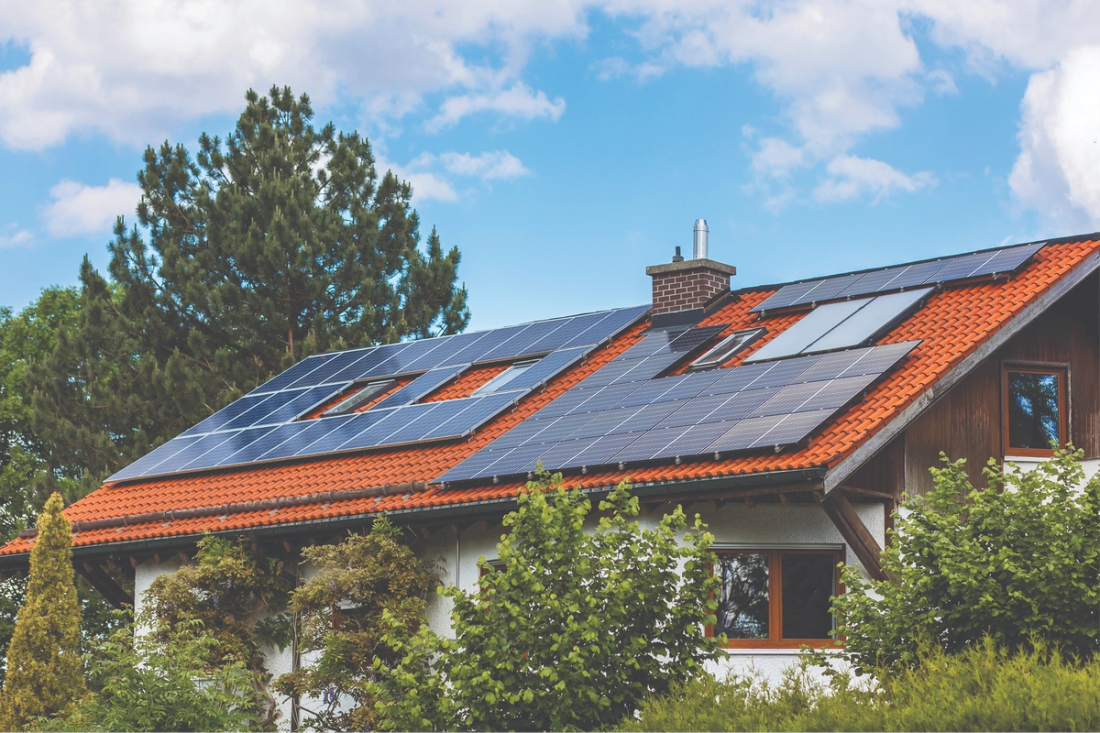Introduction
The transition to low-carbon energy in the UK is accelerating, with solar photovoltaic (PV) systems and heat pumps (HP) emerging as core technologies for sustainable homes and businesses. Individually, each offers energy efficiency and reduced carbon emissions, but when integrated, they deliver significant synergies: optimised energy usage, reduced reliance on the grid, and maximised financial and environmental benefits.
Integrating solar PV with a heat pump involves connecting renewable electricity generation with low-carbon heating systems, often complemented by energy storage, smart meters, and intelligent control systems. For installers, engineers, homeowners, and project managers, understanding technical integration, regulatory requirements, and system optimisation is essential to realise the full benefits. This article provides a comprehensive, UK-focused guide on integrating solar PV and heat pump systems, including practical considerations, regulatory compliance, design strategies, and performance optimisation.
Understanding Solar PV and Heat Pump Systems
Solar PV Overview
Solar photovoltaic systems convert sunlight into electricity using semiconductor materials in panels. Key components include:
- PV panels: Convert solar energy into DC electricity.
- Inverters: Convert DC to AC electricity compatible with home appliances or the grid.
- Mounting structures: Roof or ground-mounted support systems.
- Optional battery storage: Stores excess electricity for later use.
Solar PV provides clean electricity, reduces energy bills, and can supply surplus energy back to the grid under schemes like Smart Export Guarantee (SEG) in the UK.
Heat Pump Overview
Heat pumps transfer heat from an external source (air, ground, or water) into a building for space heating or domestic hot water. Types include:
- Air Source Heat Pumps (ASHP): Extract heat from the air.
- Ground Source Heat Pumps (GSHP): Extract heat from the ground or water sources.
- Hybrid Heat Pumps: Combine heat pumps with existing gas boilers.
Heat pumps are highly efficient, with Coefficient of Performance (COP) typically ranging between 3–5, meaning for every unit of electricity used, 3–5 units of heat are delivered.
Integrating solar PV with heat pumps allows the electricity generated to power low-carbon heating, improving self-consumption and reducing energy costs.
Benefits of Integration
| Benefit | Description | Impact on Homeowner/Installer |
| Reduced Energy Bills | PV electricity powers the heat pump instead of grid electricity | Significant savings, especially during sunny periods |
| Maximised Self-Consumption | Solar generation used directly for heating instead of exporting to grid | Higher ROI for PV investment |
| Carbon Emissions Reduction | Replaces fossil-fuel heating with renewable electricity | Contributes to UK net-zero 2050 goals |
| Load Shifting & Grid Optimisation | Excess PV stored in batteries or used during peak generation | Reduces reliance on grid and energy costs |
| Increased Property Value | Low-carbon, energy-efficient homes are more attractive | Long-term asset value enhancement |
| Eligibility for Incentives | Compliance with schemes like ECO4 and SEG | Financial support and faster ROI |
For installers, integration opens up new revenue streams by combining PV and heat pump installations and providing complete energy solutions.
Technical Considerations for Integration
Sizing and Load Matching
One of the critical factors in integration is correctly sizing both systems to match energy demand.
- Heat Pump Load Calculation: Determine the building’s heating demand using UK climate data, building insulation, and occupancy patterns.
- PV Sizing: Size PV arrays to provide sufficient electricity for heat pump operation during sunny periods while avoiding oversizing relative to roof space and grid limitations.
- Battery Storage Sizing: Optional, but can maximise PV self-consumption and provide backup during low solar generation.
Electrical Considerations
- Direct Coupling vs Grid-Tied: Heat pumps can either use solar PV directly when available (via DC optimisers or AC coupling) or draw from the grid when PV is insufficient.
- Smart Metering and Load Management: Smart meters and energy management systems allow automatic switching between PV, battery, and grid supply, optimising energy use.
- Circuit Protection: Overcurrent protection, disconnects, and grounding must comply with Part P (electrical safety) and wiring regulations in the UK.
Control and Automation
- Intelligent Controllers: Monitor PV generation and adjust heat pump operation in real-time.
- Scheduling: Heat pumps can be set to operate when PV generation is highest, or during off-peak electricity tariffs.
- Integration with Home Energy Platforms: Platforms like Reonic aggregate PV and heat pump data, providing actionable insights, monitoring, and fault detection.
Regulatory and Compliance Requirements
PV Compliance
- MCS Certification: Ensures PV modules and inverters meet UK standards.
- Building Regulations Part L: PV installations must meet energy-efficiency requirements.
- Grid Connection Compliance: DNO approval is required for systems exceeding set thresholds.
Heat Pump Compliance
- MCS Certification: Mandatory for heat pump installations to qualify for grants like ECO4.
- Building Regulations Part L: Specifies allowable energy demand and heating efficiency.
- Ecodesign Standards: Heat pumps must meet minimum COP/SCOP efficiency levels.
Integration-Specific Requirements
- Electrical interconnection between PV, battery, and heat pump must comply with UK wiring regulations.
- Smart control systems must ensure safety disconnects, anti-islanding protection, and fail-safe operation.
Proper compliance ensures eligibility for financial incentives, legal adherence, safety, and warranty coverage.
Design Strategies for Optimal Integration
1. Peak-Shaving with PV
Maximise PV self-consumption by scheduling heat pump operation during peak solar generation hours. This reduces grid reliance and lowers electricity bills.
2. Battery-Assisted Operation
Integrating a battery allows storage of surplus PV energy for use when solar generation is low. This is particularly useful during winter months when heat pumps require more energy.
3. Zoning and Temperature Control
Divide heating zones and control via smart thermostats to prioritise areas needing heating during PV availability. This improves efficiency and comfort.
4. Smart Grid Interaction
For advanced systems, integrate with demand-response programs to feed excess PV to the grid or adjust heat pump load according to dynamic pricing.
5. Predictive Analytics
Energy platforms can forecast PV generation and heating demand, optimising heat pump operation and battery dispatch to minimise costs.
Case Studies
Residential Integration
- Scenario: A 4-bedroom detached home in the UK installs a 6 kWp PV system with an air-source heat pump and 5 kWh battery.
- Result: PV covers ~60% of heat pump electricity use in summer, with battery storage providing evening heating coverage. Energy bills drop by 35%, and carbon emissions are reduced by 2.5 tonnes annually.
Commercial Integration
- Scenario: Small office building uses a 20 kWp rooftop PV array and ground-source heat pump for HVAC.
- Result: Peak shaving and smart control reduce grid electricity use by 40%, while monitoring software identifies maintenance needs early, reducing downtime.
Installation Best Practices
- Early Design Coordination: Consider building orientation, roof space, shading, and heating demand before installation.
- Certified Installers: Use MCS-certified professionals for both PV and heat pump installations.
- Energy Modelling: Simulate combined system performance to verify sizing, battery requirements, and expected savings.
- Smart Controls Setup: Install controllers and smart meters for real-time monitoring and automation.
- Documentation and Compliance: Maintain MCS certifications, Part L compliance reports, and warranty records for homeowners.
Monitoring and Optimisation
- Real-Time Monitoring: Platforms like Reonic track PV generation, heat pump electricity consumption, battery storage, and household demand.
- Performance Analysis: Detect inefficiencies or faults in PV or heat pump operation.
- Predictive Maintenance: Identify potential failures before they impact performance, ensuring long-term system reliability.
- Energy Insights for Homeowners: Provide actionable recommendations to shift loads, adjust temperature settings, and maximise PV self-consumption.
Future Trends
- AI-Driven Energy Management: Predictive algorithms will optimise heat pump and PV usage based on weather forecasts, occupancy, and dynamic tariffs.
- Vehicle-to-Home Integration: EVs will become additional energy storage, complementing PV and heat pumps for flexible load management.
- Hybrid Heat Pump Systems: Combining gas backup with PV-powered heat pumps for seasonal efficiency.
- Net-Zero Ready Homes: Integrated PV and heat pump systems will become standard in new builds under the Future Homes Standard.
- Grid-Interactive Buildings: Homes and businesses will actively manage energy flows, selling excess PV generation or participating in demand-response programs.
Conclusion
Integrating solar PV and heat pumps is a highly effective strategy for reducing energy bills, lowering carbon emissions, and future-proofing homes and businesses in the UK. Success depends on careful system sizing, electrical integration, smart control, regulatory compliance, and ongoing monitoring. Platforms like Reonic simplify this process by consolidating PV and heat pump data, optimising energy flows, and ensuring compliance. For installers, engineers, and homeowners, adopting best practices in integration unlocks the full potential of renewable energy systems and contributes to the UK’s net-zero goals.
FAQ
Q1: Can any home integrate solar PV with a heat pump?
Most homes can, but structural, shading, and roof orientation considerations affect PV sizing and heat pump efficiency.
Q2: How much can homeowners save by integrating PV and heat pumps?
Savings vary, but residential systems typically reduce energy bills by 30–50%, depending on PV generation and heating demand.
Q3: Do PV and heat pumps require MCS certification?
Yes, MCS certification is mandatory for eligibility for grants, ECO4 incentives, and warranty compliance.
Q4: Should I include battery storage in the system?
While optional, battery storage maximises self-consumption, reduces grid reliance, and ensures energy supply during low PV generation.
Q5: How do smart meters and controllers improve integration?
They optimise PV usage, heat pump operation, and battery dispatch in real-time, maximising savings and efficiency.
Q6: Are there UK incentives for combined PV and heat pump systems?
Yes, homeowners may qualify for ECO4, Smart Export Guarantee (SEG), and other local renewable-energy schemes.
Q7: How do platforms like Reonic help installers?
Reonic consolidates system data, manages compliance and certification records, monitors performance, and provides actionable insights to optimise installations.
Q8: What challenges exist with integration?
Challenges include system sizing, electrical safety, regulatory compliance, smart control setup, and seasonal variability in PV generation.







